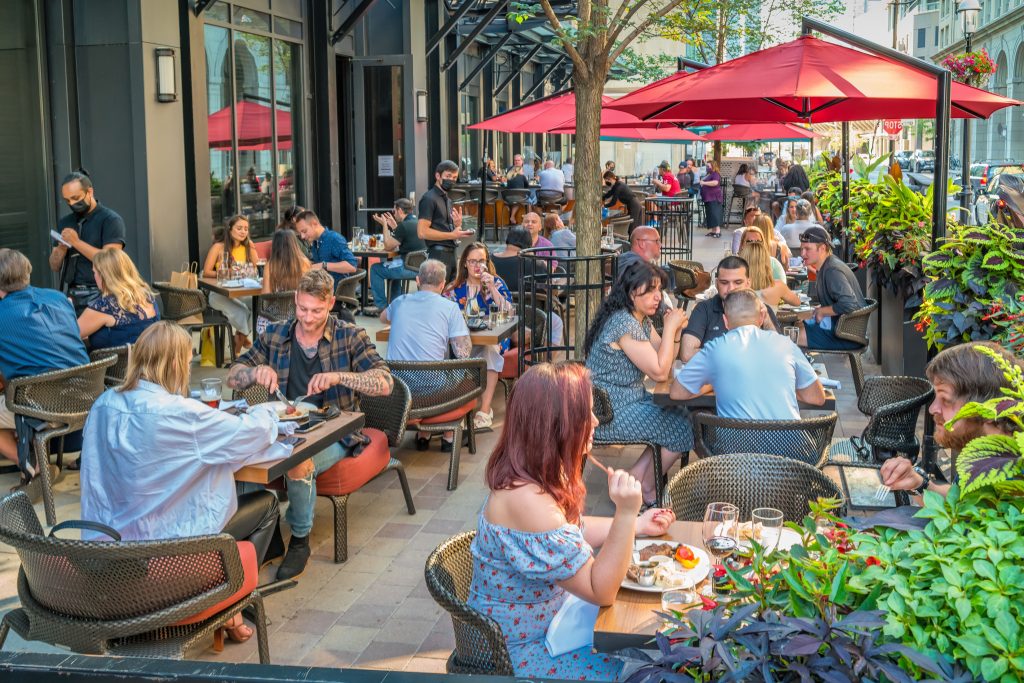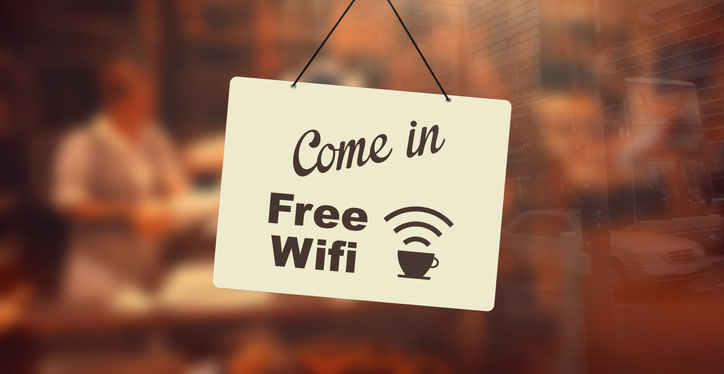Let’s face it – the pandemic changed almost everything for small businesses. There’s no question it had an initial negative impact. In 2020 alone, CNBC reported that 30% of storefronts in America permanently closed their doors. However, small businesses stepped up and showed remarkable resilience, courage, and innovation. They may have been knocked down for a time, but they were far from being knocked out.
Outdoor WiFi used to be something that was nice to have. Now it’s considered an essential service.
One silver lining was that many businesses could expand outdoors. At one point or another, bars and restaurants, hair salons and barbershops, and gyms and fitness centers all moved outside. Even some clothing shops stretched their retail space outdoors. We’ve seen businesses take advantage of street parking, sidewalks, parking lots, patios, and rooftops. The move outdoors was originally done because owners had to adapt to stay afloat, but now many owners want their businesses to stay this way.
The National Restaurant Association’s 2021 State of the Restaurant Industry report showed that 62% of fine dining and 56% of casual dining dedicated more resources to developing and expanding outdoor dining since the start of the pandemic. Their 2023 report showed that restaurants are keeping the pivot forced by the pandemic in place – 9 in 10 operators plan to continue offering outdoor seating.
One of the essentials in this new normal for business is outdoor WiFi. According to Cisco, 96% of customers expect free WiFi as part of their experience. Whether you are already conducting business outside or are preparing to make the move, an outdoor access point – like those from Meraki Go – is necessary to serve your customers and employees. Here are four important reasons why.
- Greater range and seamless coverage
As we’ve discussed on the Meraki Go blog, there are many challenges with WiFi and ways to improve the strength of your signal. One is amplifying the distance a signal can travel. If you’re only using a wireless router from your Internet Service Provider (ISP) for your business, which you should not be doing for a variety of reasons, your WiFi is likely to only have a coverage area of 150 to 300 square feet indoors. This is true of many indoor access points as well.
In contrast, Meraki Go’s indoor and outdoor access points give you more than three times that coverage – 500 to 1,000 square feet. If you’ve expanded the size of your business by utilizing exterior space, you’re going to need an outdoor access point to give a seamless WiFi experience to your guests. You’ll also need it to support your employees and any of your network devices, which could range from your POS system to security cameras.
Outdoor WiFi used to be something that was nice to have. Now it’s considered an essential service. You need reliable coverage for both your customers and employees regardless of where they’re accessing the WiFi at your business. This could now include the parking spaces on the street outside your front door or all the way across a nearby parking lot. - Contactless POS systems and digital menus
Because of the pandemic, small businesses now get suggested upgrades straight from the CDC. One recommendation is implementing a contactless payment system. This promotes safety as well as security for your guests, and improves social distancing by moving the electronic payment reader away from the cashier. In addition, there are many benefits to small businesses with contactless payments, from reducing transaction errors to being able to build loyalty programs.
Another way many bars and restaurants have tried to keep everyone safe is by getting rid of physical menus. Now customers can find a QR code sitting on their table that they then scan in order to read the menu on their phones. All of this activity requires solid and secure WiFi, and necessitates an outdoor access point if any of your business is alfresco.
- Weather
Small businesses have been very creative while expanding outdoors, and they’ve done a number of things to make spaces safer and more beautiful. We’ve seen restaurants, for instance, incorporate awnings, umbrellas, and tents – some fully enclosed – in order to cater to outdoor diners. Regardless of how the area might be covered, though, it is never protected enough for a router or access point that’s only designed to work indoors.
If you think about it, there are so many variables to weather. Most of us have to navigate snow and rain through the year; it impacts everyone from the Pacific Northwest to the Southeast. Related to this, there’s humidity, which can wreak havoc on electronic equipment. Even variations in temperature, which can often change dramatically through the day and night, will have an impact on your hardware.
However, all of these challenges have been addressed in Meraki Go outdoor access points. No matter what Mother Nature throws your way, our access points are designed to withstand the toughest of climates and environments. - The new normal
For many customers, outdoor dining, shopping, and working out has been one of the bright spots of the pandemic. In the case of restaurants, attitudes quickly shifted from people feeling forced to sit outside to actually preferring it. And now they want it to stay that way. According to Bruce Grindy, Chief Economist for the National Restaurant Association, 84% of adults say they favor allowing small businesses to set up shop on sidewalks, streets, and parking lots on a permanent basis.
So do the owners. Outdoor spaces have become an important source of income for small businesses. In November 2021, Forbes reported that an outdoor area can boost revenue up to 30% regardless of the type of business.
To restaurant owners, it’s clear that outdoor dining is what their customers want. “We have a tremendous amount of people who just do not want to dine inside,” said David LeFevre, owner of a Manhattan Beach restaurant that expanded into parking spaces through the city’s “dining deck” program. “They want to be outside, they want to be where it’s ventilated, they want to be where they can have more space from [other] guests.”
It’s not only sunny Southern California that feels this way. Media company OZY reported that cities across the country with wildly different climates – from Seattle to Syracuse – fell in love with the outdoor spaces created by their business owners. Customers, even in the Northeast, say they don’t mind the cold. A recent “Future of Commerce” report from Square showed that 65% of customers would now choose outdoor seating even when the temperatures drop.
It does appear that all these alfresco businesses are here to stay. Nearly half of full-service restaurants added outdoor seating between March 2020 and April 2022, and now the number is 90% for all types of eating establishments. Restaurants, cafés, and coffee shops are also far from the only types of businesses affected by this trend. Many gyms, for example, have continued to offer ways to work out outside. We’re now in a world where store owners must have outdoor WiFi in order to support their ever-evolving businesses. Meraki Go’s outdoor access points provide you with the most secure and reliable network, greatest coverage area, and even the ability to learn more about your customers.

Visit the Meraki Go site to learn more about our intuitive and innovative solutions that support small businesses.
SOURCES:
CDC
City of San Francisco
CNBC
CNET
Fast Casual
Forbes
The Guardian
KTLA
National Restaurant Association (including Chief Economist Bruce Grindy)
OZY
SmallBusiness.com
Square
Voice of OC (Orange County, CA)





